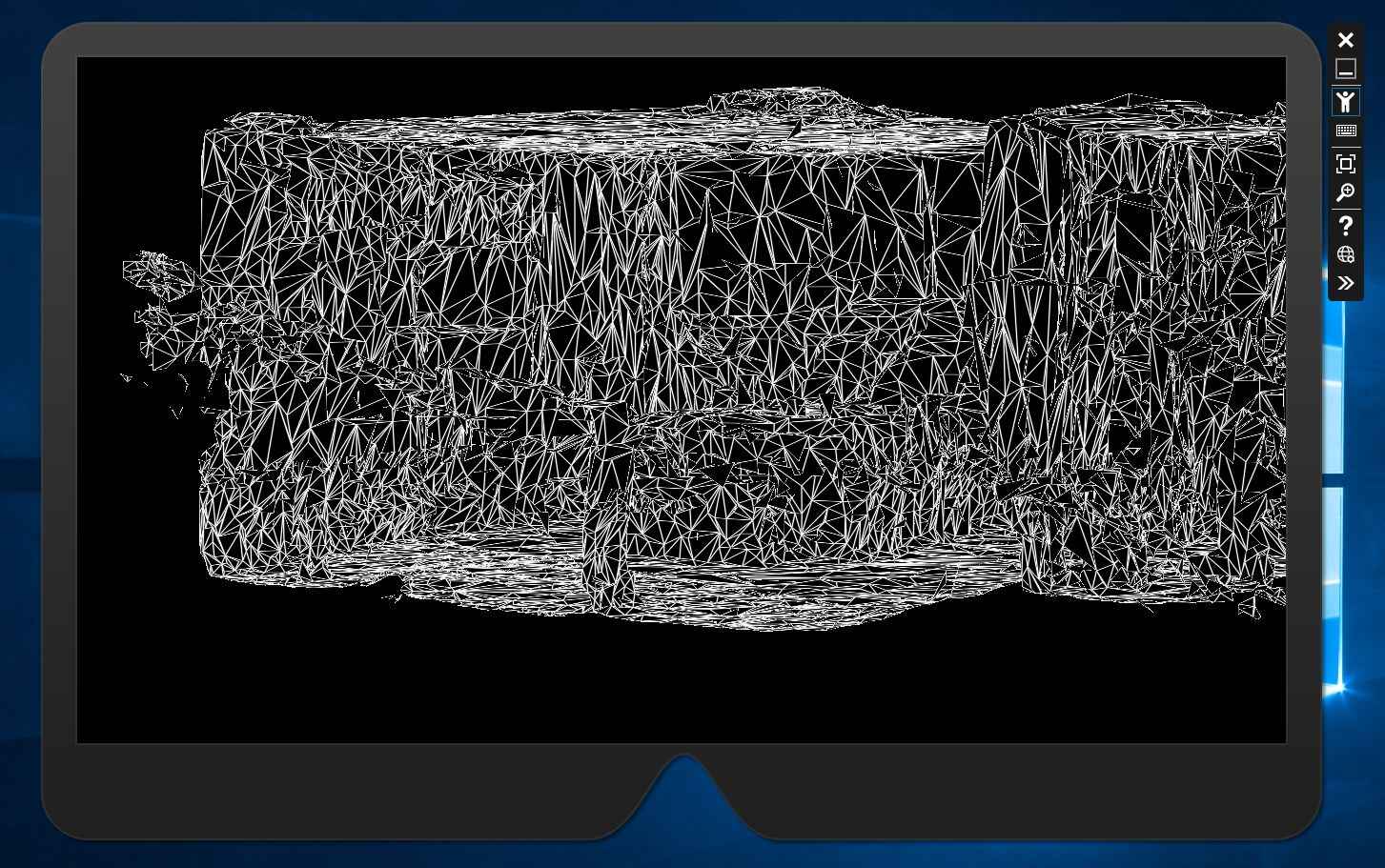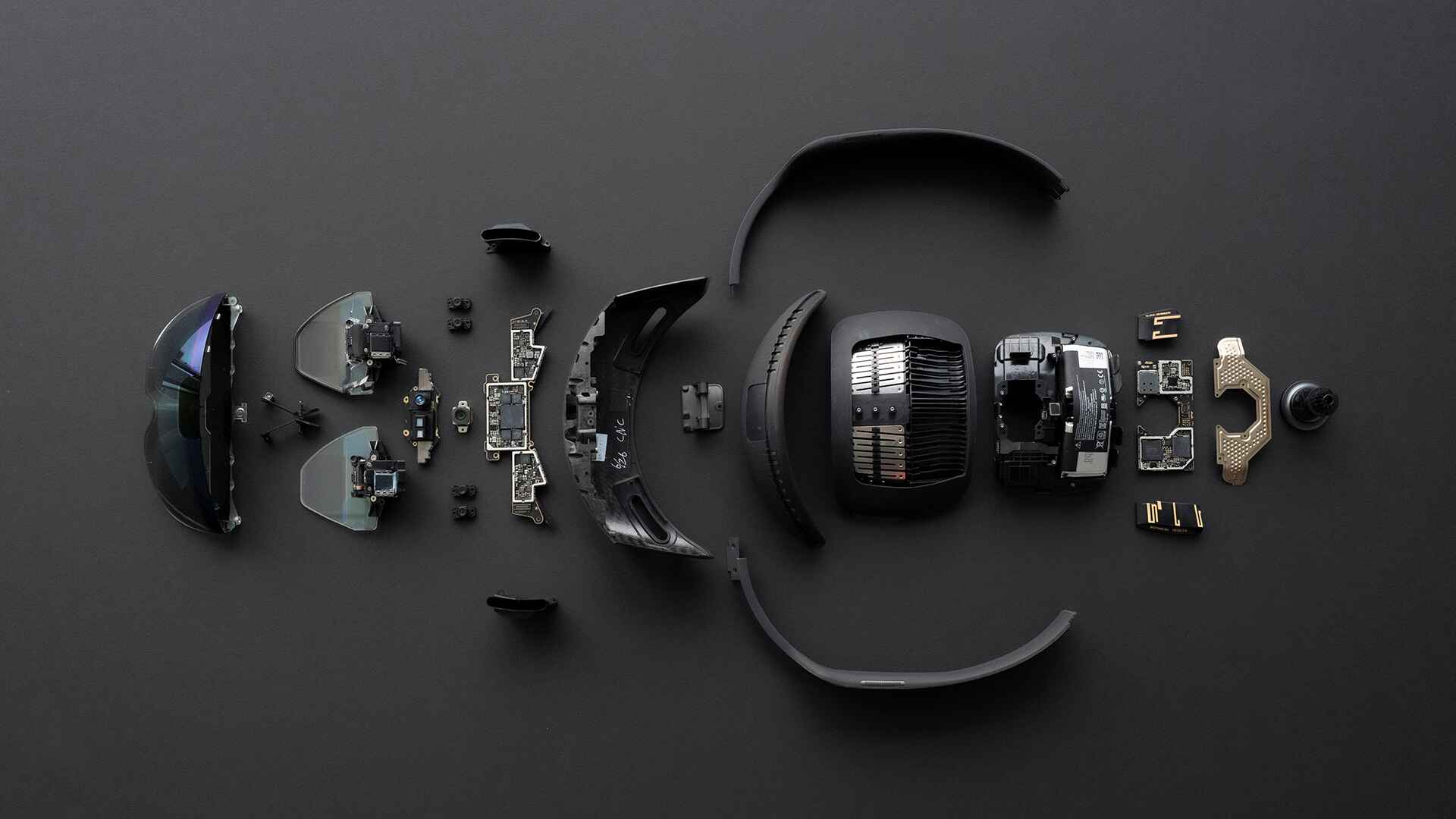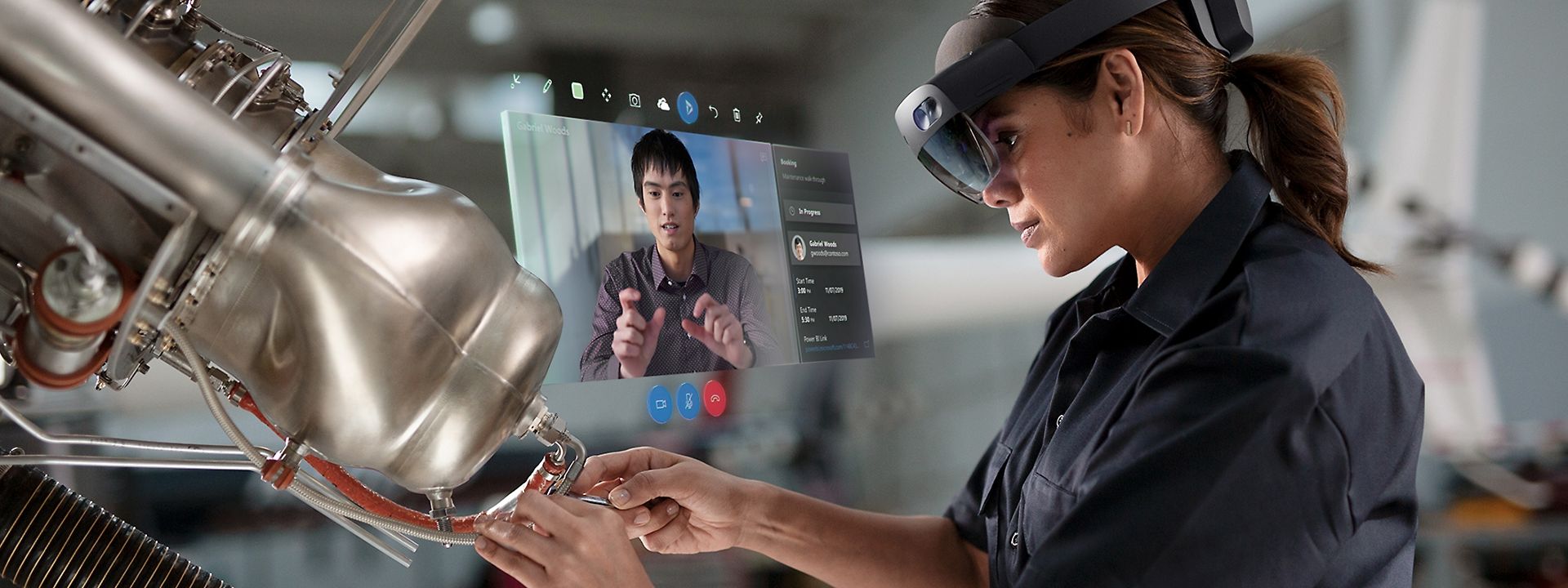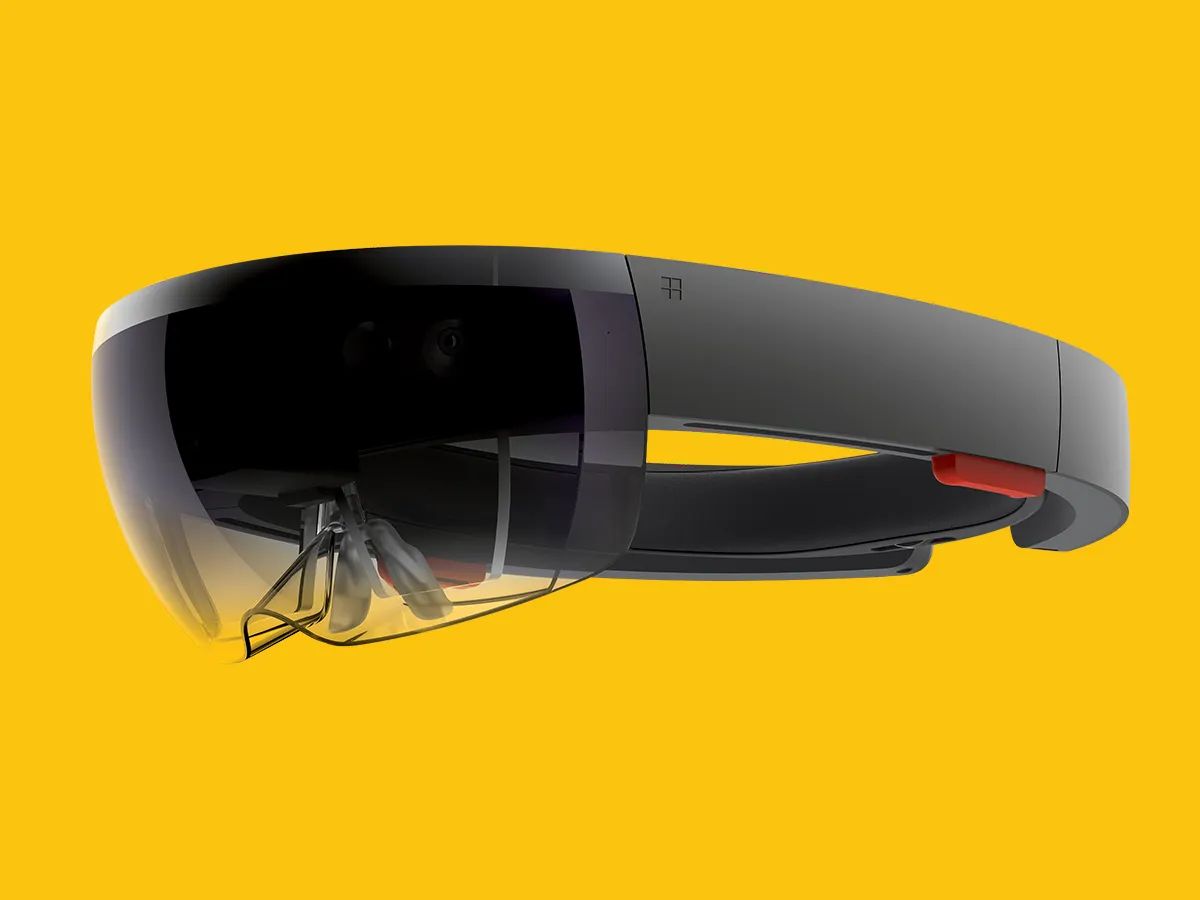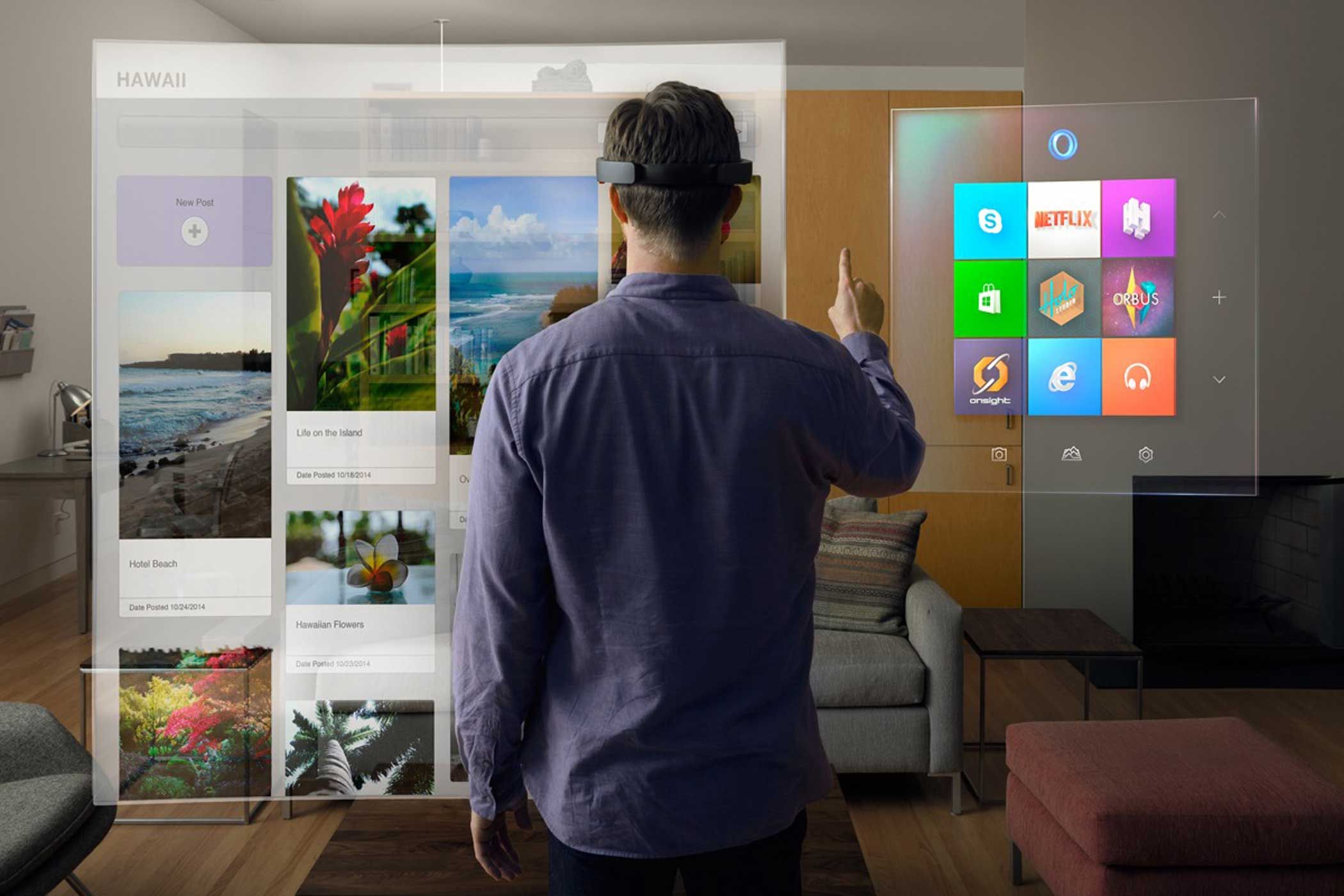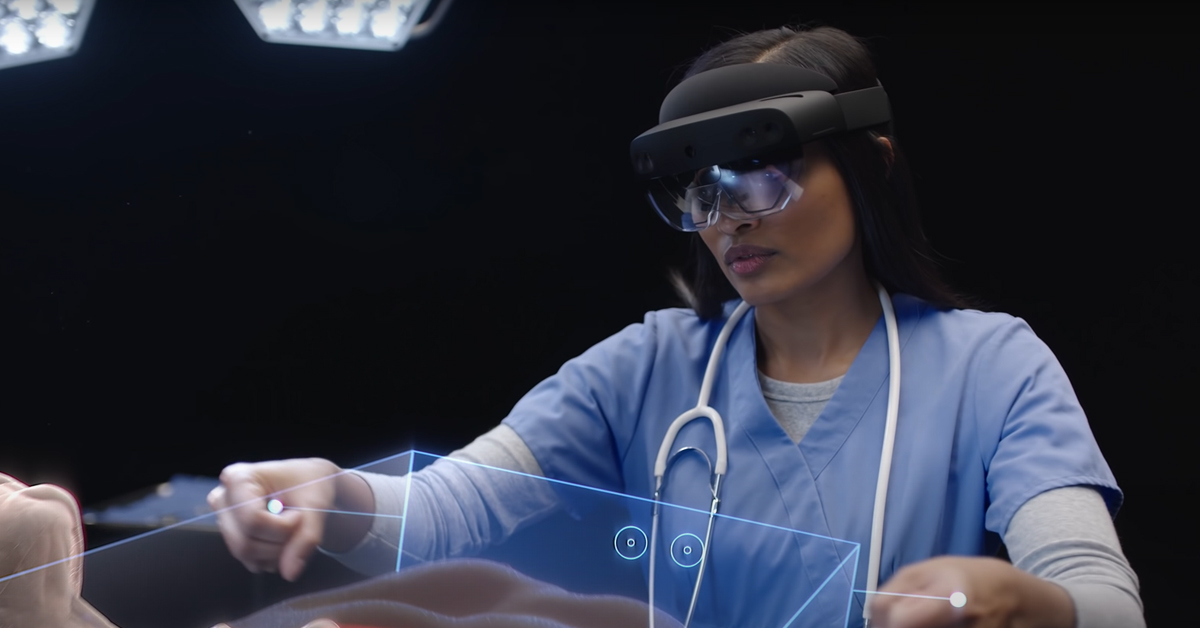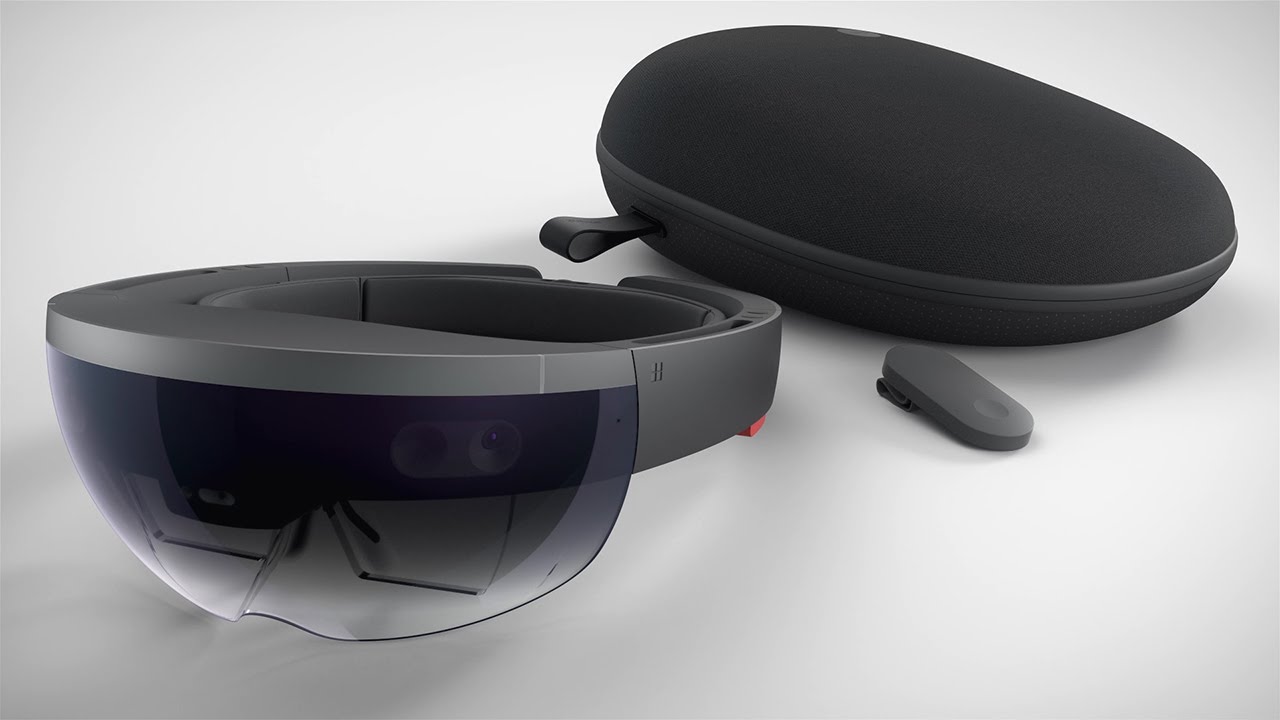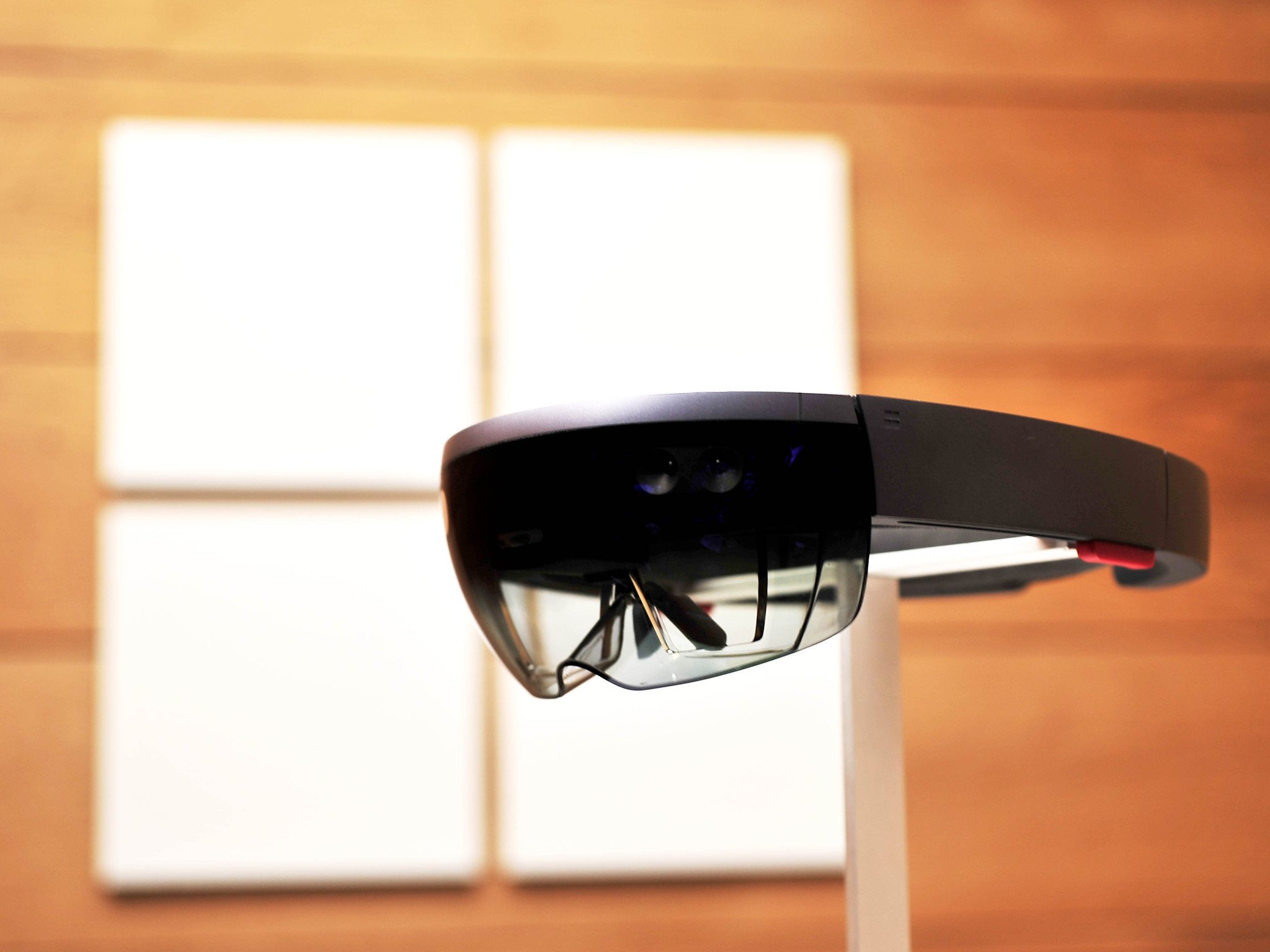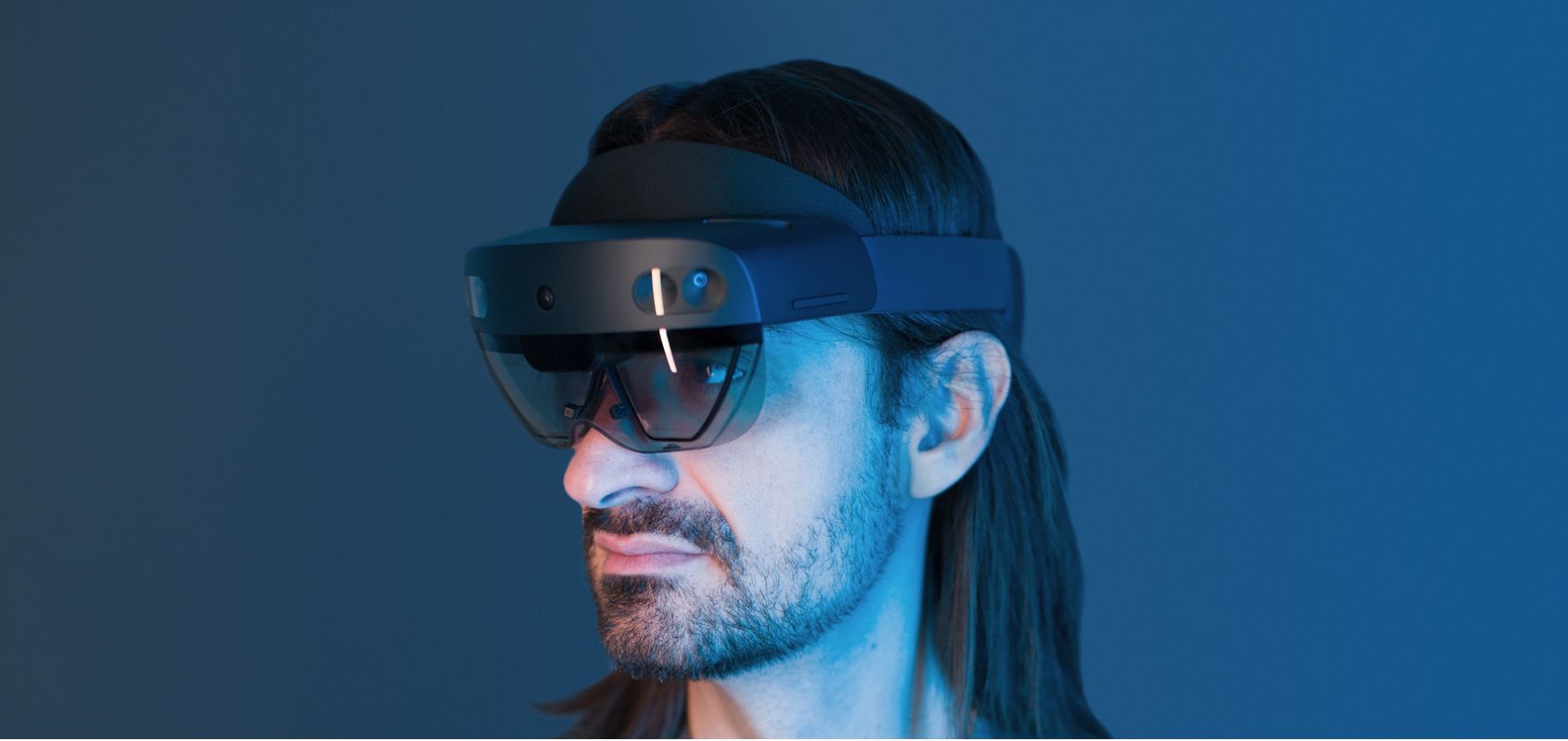Introduction
With the rapid advancement of technology, the realm of virtual reality has become increasingly accessible to the masses. One notable innovation in this field is the Microsoft HoloLens, a groundbreaking mixed reality headset that seamlessly blends the physical and virtual worlds. The HoloLens provides users with a unique and interactive experience, overlaying holographic images onto their real-life surroundings.
At the core of the HoloLens’s immersive experience is a technology known as spatial mapping. While virtual reality headsets transport users to entirely digital environments, the HoloLens creates an augmented reality by superimposing virtual elements into the physical world. This is made possible through the accurate mapping and understanding of the user’s surroundings.
Spatial mapping allows the HoloLens to detect and interpret the physical environment, creating a digital representation of the real world that users can interact with. By understanding the spatial dimensions, surfaces, and objects in the environment, the HoloLens can precisely place and anchor holographic content, ensuring a seamless integration between the virtual and physical elements.
The impact of spatial mapping in the HoloLens cannot be overstated. It enables a wide range of applications, from immersive gaming experiences to architectural design simulations. Understanding how the HoloLens spatial mapping hardware works is crucial to unlocking its full potential.
In this article, we will delve into the intricacies of HoloLens spatial mapping hardware, exploring the technologies and processes that enable the device to accurately map and understand the user’s surroundings. We will discuss the depth sensor technology, infrared cameras, photodetector and micro-mirrors, processing unit, and algorithms employed by the HoloLens to create its robust spatial mapping system.
What is HoloLens?
The HoloLens, developed by Microsoft, is a cutting-edge mixed reality headset that combines elements of virtual reality and augmented reality. Unlike traditional virtual reality headsets that completely immerse users in a digital environment, the HoloLens overlays holographic images onto the real world, allowing users to interact with both virtual and physical objects simultaneously.
The HoloLens is a self-contained wearable device that doesn’t require any external sensors or wires. It features an array of sensors, cameras, and advanced processing capabilities, all integrated into a sleek and comfortable headset. The device is equipped with transparent lenses that display holographic content, providing users with a clear view of their surroundings while augmenting it with digital imagery.
One of the key features of the HoloLens is its ability to recognize and track the physical environment in real-time. Through a process called spatial mapping, the HoloLens scans and understands the surfaces, dimensions, and objects present in the user’s surroundings. This enables the device to precisely place holographic elements in a way that seamlessly blends with the real world, creating a truly immersive mixed reality experience.
The HoloLens allows users to interact with holographic content using gestures, voice commands, and eye-tracking. Users can manipulate and interact with virtual objects as if they were physically present, leading to a more natural and intuitive user experience. The device also features spatial sound, which enhances the immersion by accurately positioning audio sources in relation to the user’s environment.
The applications for the HoloLens are vast and diverse. From entertainment and gaming to education and enterprise solutions, the HoloLens has the potential to revolutionize various industries. Architects can use the HoloLens to visualize and manipulate digital models in real-time, allowing for improved design and collaboration. Medical professionals can benefit from augmented reality overlays during surgical procedures, enhancing precision and reducing errors.
Overall, the HoloLens represents a significant advancement in mixed reality technology. It combines the best of virtual reality and augmented reality to create a truly immersive and interactive experience. With its spatial mapping capabilities and intuitive interaction methods, the HoloLens opens up a world of possibilities for users and industries alike.
The Importance of Spatial Mapping
Spatial mapping plays a vital role in the functionality and user experience of the HoloLens. It allows the device to accurately understand and interact with the physical world, enabling seamless integration between the virtual and real environments. The importance of spatial mapping can be seen in several key aspects:
1. Object Placement and Anchoring: Spatial mapping enables the precise placement and anchoring of virtual objects in the user’s surroundings. By mapping the physical environment, the HoloLens can identify suitable surfaces and align virtual content accordingly. This ensures that virtual objects appear anchored in the real world, creating a more believable mixed reality experience.
2. Real-time Interaction: With spatial mapping, the HoloLens can dynamically detect changes in the user’s environment. This allows virtual elements to interact with physical objects in real-time. For example, a virtual ball can bounce and roll off a table, or a virtual character can walk around obstacles in the real world. Real-time interaction enhances the user’s immersion and facilitates more intuitive and engaging experiences.
3. User Safety: Spatial mapping is crucial for ensuring user safety while using the HoloLens. By understanding the environment, the device can provide warnings or prompts if the user is approaching obstacles or dangerous areas. This helps prevent accidents and ensures a safer mixed reality experience.
4. Spatial Audio: Spatial mapping not only applies to visual elements but also plays a key role in spatial audio. By mapping the physical environment, the HoloLens can accurately position audio sources in relation to the user’s surroundings. This creates a more realistic and immersive audio experience, enhancing the overall sense of presence in the mixed reality environment.
5. Context-Awareness: Spatial mapping enables the HoloLens to understand the context in which the user is interacting. By recognizing surfaces, objects, and dimensions, the device can adapt and respond accordingly. For example, virtual content can dynamically adjust its size or shape based on the physical space available. This context-awareness enhances the user experience by providing personalized and optimized interactions.
Overall, spatial mapping is crucial for the HoloLens to deliver a seamless and immersive mixed reality experience. It enables precise object placement, real-time interaction, user safety, spatial audio, and context-awareness. By accurately understanding and mapping the physical world, the HoloLens can create a powerful and engaging mixed reality environment for users to explore and interact with.
Understanding Spatial Mapping in HoloLens
Spatial mapping is a key technology in the HoloLens that allows the device to understand and interact with the user’s physical environment. It involves creating a digital representation of the real world by analyzing the dimensions, surfaces, and objects in the surroundings. The HoloLens utilizes a combination of hardware and software techniques to achieve accurate and real-time spatial mapping.
The process of spatial mapping begins with the HoloLens’s depth sensor technology. This hardware component utilizes an infrared laser projector and an infrared camera to measure the distance between the device and the surfaces in the environment. By emitting infrared light and analyzing the time it takes for the light to bounce back, the HoloLens can create a depth map of the scene.
In addition to depth sensing, the HoloLens is equipped with multiple infrared cameras that capture the surrounding environment in real-time. These infrared cameras work in conjunction with the depth sensor to track and map the physical space. By analyzing the infrared images, the device can identify surfaces, objects, and boundaries, forming a comprehensive understanding of the user’s surroundings.
The spatial mapping process also involves the HoloLens’s photodetector and micro-mirror system. The photodetector measures the intensity of the reflected infrared light, providing data that helps the device distinguish between different surfaces and objects. The micro-mirrors, on the other hand, assist in directing the infrared light onto different areas of the scene, allowing for a more detailed spatial mapping.
Once the hardware components capture the necessary data, the information is processed by the HoloLens’s internal processing unit. Advanced algorithms analyze the depth maps, infrared images, and sensor data to create a 3D reconstruction of the physical environment. This reconstruction forms a detailed spatial map that the HoloLens can use to accurately place virtual content and enable real-time interaction.
The HoloLens continuously updates and refines the spatial map as the user moves or as the environment changes. This ensures that virtual objects maintain their position and alignment in relation to the physical space. The device can adapt to new objects entering the scene or adjust the placement based on changes in the environment, allowing for a seamless mixed reality experience.
It is worth noting that spatial mapping in the HoloLens has some limitations and challenges. Highly reflective or transparent surfaces can be difficult to accurately capture, and dynamic environments with moving objects may pose challenges for real-time mapping. However, Microsoft continues to improve the spatial mapping capabilities with each iteration of the HoloLens, pushing the boundaries of mixed reality technology.
In summary, spatial mapping in the HoloLens involves the use of depth sensor technology, infrared cameras, photodetectors, micro-mirrors, and advanced algorithms to create a digital representation of the physical environment. Understanding the process of spatial mapping is crucial to appreciating the immersive mixed reality experiences that the HoloLens can deliver.
How Does HoloLens Spatial Mapping Hardware Work
The spatial mapping hardware in the HoloLens is a sophisticated combination of technologies designed to accurately capture and analyze the user’s physical environment. This hardware includes depth sensor technology, infrared cameras, photodetectors, and micro-mirrors, all working together to create a seamless mixed reality experience.
The HoloLens utilizes a depth sensor, which consists of an infrared laser projector and an infrared camera. The laser projector emits a pattern of infrared light onto the surrounding space, while the camera captures the reflected light. By analyzing the time it takes for the light to bounce back, the HoloLens can measure the distance between the device and the surfaces in the environment. This depth sensing technology allows the HoloLens to create a detailed depth map of the scene, capturing the dimensions and spatial layout.
In addition to the depth sensor, the HoloLens is equipped with multiple infrared cameras. These cameras help capture the surrounding environment in real-time, providing valuable data for spatial mapping. By analyzing the infrared images, the HoloLens can recognize surfaces, objects, and boundaries, providing a comprehensive understanding of the user’s surroundings.
To further enhance the accuracy of spatial mapping, the HoloLens incorporates a photodetector and micro-mirrors. The photodetector measures the intensity of the infrared light that is reflected back to the device. This information helps the HoloLens differentiate between different surfaces and objects, allowing for more precise mapping.
The micro-mirrors in the HoloLens play a crucial role in directing the infrared light. By selectively redirecting the light onto different areas of the scene, the device can capture a more detailed and comprehensive spatial map. This allows for a more accurate representation of the physical environment, enabling virtual content to seamlessly integrate with the real world.
All the captured data from the depth sensor, infrared cameras, photodetector, and micro-mirrors is processed by the HoloLens’s internal processing unit. Advanced algorithms analyze the depth maps, infrared images, and sensor data to create a 3D reconstruction of the physical environment. This reconstruction forms a detailed spatial map that the HoloLens uses to precisely place virtual content and enable real-time interaction.
The HoloLens continuously updates and refines the spatial map as the user moves or as the environment changes. This ensures that virtual objects maintain their position and alignment in relation to the physical space. The device adapts to new objects entering the scene or adjusts the placement based on changes in the environment, resulting in a seamless mixed reality experience.
While the spatial mapping hardware in the HoloLens is highly advanced, there are some limitations and challenges. Highly reflective or transparent surfaces can be difficult to accurately capture, and dynamic environments with moving objects may pose challenges for real-time mapping. However, Microsoft is continuously improving the spatial mapping capabilities with each iteration of the HoloLens, pushing the boundaries of mixed reality technology.
In summary, the HoloLens spatial mapping hardware combines depth sensor technology, infrared cameras, a photodetector, and micro-mirrors to accurately capture and analyze the user’s physical environment. This hardware, along with advanced algorithms, allows for the creation of a detailed spatial map that enables seamless integration of virtual content with the real world.
Depth Sensor Technology
Depth sensor technology is a crucial component of the spatial mapping hardware in the HoloLens. It enables the device to measure the distance between the headset and the surfaces in the user’s environment, creating a detailed depth map that forms the basis of spatial mapping.
The depth sensor in the HoloLens consists of an infrared laser projector and an infrared camera. The laser projector emits a pattern of infrared light onto the surrounding space, while the camera captures the reflected light. By analyzing the time it takes for the light to bounce back, the HoloLens can calculate the distance between the device and the surfaces in the environment.
The infrared laser emitted by the projector is invisible to the human eye and harmless, ensuring the safety of the user. The pattern of the emitted light allows the HoloLens to gather depth information from multiple points in the scene, resulting in a more accurate depth map.
Once the infrared light reflects off the surfaces, it is captured by the infrared camera. The camera records the intensity of the reflected light, providing valuable data for depth calculations. By analyzing the differences in light intensity, the HoloLens can determine the distance between the device and the objects in the environment.
The depth sensor technology in the HoloLens allows for the creation of a detailed depth map, capturing the dimensions and layout of the physical space. This information is essential for precise object placement and real-time interaction with virtual content.
Depth sensor technology has various applications beyond spatial mapping in the HoloLens. It has been widely adopted in fields such as robotics, computer vision, and 3D scanning. Depth sensors have proven to be valuable in applications like gesture recognition, object tracking, and environment mapping.
One of the advantages of depth sensor technology is its ability to work in various lighting conditions. Unlike traditional cameras that rely on visible light, depth sensors utilize infrared light, making them less affected by changes in ambient lighting. This allows for consistent and accurate depth measurements, regardless of the lighting environment.
It is worth noting that depth sensor technology in the HoloLens has some limitations. Certain types of surfaces, such as highly reflective or transparent materials, may pose challenges for accurate depth sensing. Additionally, certain scenarios, such as extreme distances or occluded objects, may impact the device’s ability to accurately measure depth.
Overall, depth sensor technology is a crucial element of the spatial mapping hardware in the HoloLens. It allows the device to measure the distance between the headset and the surfaces in the user’s environment, enabling the creation of a detailed depth map. This depth map forms the foundation for the HoloLens’s spatial mapping capabilities, facilitating precise object placement and real-time interaction in mixed reality experiences.
Infrared Cameras
Infrared cameras are an essential component of the spatial mapping hardware in the HoloLens. They play a crucial role in capturing and analyzing the user’s physical environment, providing valuable data for spatial mapping and creating a seamless mixed reality experience.
The HoloLens is equipped with multiple infrared cameras strategically placed throughout the device. These cameras work in conjunction with other sensors to capture real-time images of the surrounding environment. Unlike traditional visible light cameras, infrared cameras are specifically designed to detect and capture infrared radiation.
The use of infrared cameras in the HoloLens allows for a range of benefits in spatial mapping. Infrared radiation is emitted by objects and surfaces as thermal energy, and it can be detected by the camera. This allows the HoloLens to gather valuable information about the environment, such as surface temperatures and heat distribution.
By analyzing the infrared images captured by the cameras, the HoloLens can recognize and understand the objects, surfaces, and boundaries in the environment. This recognition is a key step in creating a detailed and accurate spatial map that the device uses for object placement and real-time interaction with virtual content.
One advantage of using infrared cameras is their ability to operate in various lighting conditions. Infrared light is not affected by changes in visible light, making it suitable for use in low-light environments or situations where the lighting conditions may vary. This helps ensure consistent and reliable spatial mapping performance in different lighting scenarios.
Infrared cameras also provide the HoloLens with the ability to see through certain materials that are opaque to visible light. This enables the device to detect objects and surfaces that may not be visible to the user’s naked eye, expanding the potential applications and capabilities of the mixed reality experience.
It is worth noting that the effectiveness of infrared cameras in spatial mapping can be influenced by factors such as the distance between the device and the environment, the reflectivity of surfaces, and the presence of obstructions. These factors may impact the accuracy and reliability of the spatial mapping process, and calibration techniques are employed to address such challenges.
Overall, the inclusion of infrared cameras in the HoloLens’s spatial mapping hardware allows the device to capture and analyze the surroundings in a way that is not possible with traditional visible light cameras. By leveraging the unique properties of infrared radiation, the HoloLens can create a detailed understanding of the physical environment, facilitating precise object placement and real-time interaction in mixed reality experiences.
Photodetector and Micro-mirrors
The photodetector and micro-mirrors are integral components of the spatial mapping hardware in the HoloLens, working together to enhance the accuracy and precision of the device’s spatial mapping capabilities. These components play a crucial role in capturing and processing the infrared light used for depth sensing and mapping the user’s physical environment.
The photodetector is responsible for measuring the intensity of the infrared light that is reflected back to the HoloLens from the surfaces in the environment. By detecting and analyzing the intensity of the reflected light, the photodetector provides valuable information to the device, enabling it to distinguish between different surfaces and objects.
This information is essential for the HoloLens’s spatial mapping process, as it allows the device to accurately determine the boundaries and characteristics of the real-world objects. By analyzing the intensity of the reflected infrared light, the HoloLens can differentiate between surfaces and objects with varying properties, such as reflectivity or transparency.
The micro-mirrors in the HoloLens work hand in hand with the photodetector to direct the infrared light in a controlled manner. These tiny mirrors are used to selectively reflect the infrared light onto different areas of the user’s environment, allowing for a more detailed and comprehensive spatial mapping.
By strategically directing the light onto various surfaces and objects, the micro-mirrors help the HoloLens capture more precise depth information, resulting in a more accurate representation of the physical environment. This level of precision enhances the realism and believability of the mixed reality experience, ensuring that virtual objects and elements align seamlessly with the real world.
The micro-mirrors function by tilting or adjusting their angle to redirect the infrared light. This controlled redirection of light enables the HoloLens to capture depth information from multiple points in the scene, allowing for a more comprehensive understanding and mapping of the user’s surroundings.
The coordinated efforts of the photodetector and micro-mirrors in the HoloLens ensure that the device can accurately capture depth data and create a detailed spatial map. This spatial map forms the foundation for precise object placement, real-time interaction with virtual content, and the seamless integration of the virtual and physical worlds in mixed reality experiences.
It’s important to note that the photodetector and micro-mirrors in the HoloLens system are highly sophisticated and optimized for the specific requirements of spatial mapping. Their effectiveness is influenced by factors such as the reflectivity and transparency of surfaces, as well as the lighting conditions in the environment. Calibration techniques and algorithms are employed to address any challenges and ensure accurate and reliable spatial mapping results.
In summary, the photodetector and micro-mirrors are critical components of the spatial mapping hardware in the HoloLens. They work together to capture and process the infrared light, providing valuable depth information and allowing for a precise and detailed understanding of the user’s physical environment. These components contribute to the device’s ability to accurately place virtual objects and seamlessly integrate them with the real world, enhancing the quality of mixed reality experiences.
Processing Unit and Algorithms
The processing unit and algorithms in the HoloLens play a crucial role in handling the vast amount of data captured by the spatial mapping hardware and translating it into a comprehensive understanding of the user’s environment. These components work together to process and analyze the depth maps, infrared images, and sensor data, enabling the HoloLens to create a detailed spatial map and facilitate seamless mixed reality experiences.
The processing unit in the HoloLens is responsible for efficiently handling the computational tasks required for spatial mapping. It utilizes high-performance processors and specialized hardware accelerators to process the data in real-time. This powerful processing capability allows the device to handle the complex algorithms and calculations necessary for spatial mapping.
The algorithms implemented in the HoloLens are specifically designed to analyze and interpret the data captured by the spatial mapping hardware. These algorithms process the depth maps, infrared images, and sensor data to create a 3D reconstruction of the user’s physical environment. The algorithms analyze the spatial map to identify surfaces, objects, and boundaries, enabling accurate object placement and real-time interaction with virtual content.
The algorithms also incorporate sophisticated techniques to handle challenges such as occlusions, noise, and changes in the environment. For example, the algorithms may employ filtering techniques to remove noise from the depth maps, ensuring accurate and reliable depth measurements. Additionally, the algorithms adapt to changes in the environment, continuously updating the spatial map as the user moves or as objects enter or exit the scene.
Furthermore, the algorithms in the HoloLens enable the device to track the user’s movements and maintain the alignment of virtual objects in real-time. This allows for intuitive and seamless interaction with the virtual content, enhancing the immersive mixed reality experience.
The processing unit and algorithms work in tandem to ensure the HoloLens can handle the large amount of data captured by the spatial mapping hardware and process it in real-time. The efficiency of these components is critical to providing users with a responsive, seamless, and accurate mixed reality experience.
It is worth noting that the processing unit and algorithms in the HoloLens are continually improved and optimized. As Microsoft develops new iterations of the HoloLens, advancements in hardware and software allow for more efficient processing and more sophisticated algorithms. These advancements result in enhanced spatial mapping capabilities and enable new and innovative mixed reality experiences for users.
In summary, the processing unit and algorithms in the HoloLens are key components that enable the device to process and analyze the data captured by the spatial mapping hardware. By utilizing powerful processors and specialized algorithms, the HoloLens can create a detailed spatial map of the user’s environment and provide a seamless mixed reality experience.
Limitations and Challenges
While the HoloLens offers groundbreaking mixed reality experiences, it is important to acknowledge the limitations and challenges that exist within its spatial mapping capabilities. These factors impact the device’s accuracy, performance, and user experience to some extent.
1. Reflective and Transparent Surfaces: Highly reflective or transparent surfaces can pose challenges for accurate spatial mapping. The infrared light emitted by the HoloLens may be reflected or refracted in unexpected ways, leading to inaccurate depth measurements or incomplete mapping of the environment.
2. Dynamic Environments: Spatial mapping becomes more challenging in environments with moving objects or changing conditions. The HoloLens may struggle to accurately track and map the surroundings in real-time when there are rapid changes or occlusions. This can affect the device’s ability to consistently maintain an accurate spatial representation.
3. Distance Limitations: The HoloLens’s depth sensor technology has limitations in accurately measuring depth beyond a certain distance. Objects that are too far from the device may not be captured with high precision, potentially affecting the realism and accuracy of spatial mapping in those areas.
4. Occlusion: Objects that partially or completely block the line of sight between the HoloLens and surfaces can present challenges for accurate spatial mapping. Occlusion may result in incomplete or incorrect depth information for the obstructed areas, impacting the ability to seamlessly integrate virtual content with the physical environment.
5. Lighting Conditions: Spatial mapping may be influenced by the lighting conditions in the environment. Extreme or uneven lighting, as well as areas of high contrast or darkness, can affect the accuracy of depth measurement and the clarity of infrared imaging.
6. User Movement: Rapid movement by the user can temporarily disrupt the generation of an accurate spatial map. The HoloLens may need a moment to recalibrate and adjust to the new position, potentially resulting in slight inaccuracies until the system stabilizes.
Despite these limitations and challenges, it is important to note that Microsoft actively addresses these issues and continually improves the spatial mapping capabilities of the HoloLens. Each iteration of the device builds upon the previous one, introducing enhancements to overcome these challenges and expand the potential for spatial mapping in mixed reality experiences.
Ultimately, understanding the limitations and challenges of the HoloLens’s spatial mapping helps users and developers set appropriate expectations and work within the device’s capabilities. As technology evolves, it is expected that these limitations will be further minimized, enabling even more immersive and seamless mixed reality experiences in the future.
Conclusion
The HoloLens spatial mapping hardware is a remarkable combination of depth sensor technology, infrared cameras, photodetectors, micro-mirrors, processing units, and advanced algorithms. This hardware and software integration allows the HoloLens to accurately map and understand the user’s physical environment, facilitating a seamless integration between virtual and real elements.
The spatial mapping technology in the HoloLens is essential for precise object placement, real-time interaction, user safety, spatial audio, and context-awareness. By accurately understanding and mapping the physical world, the HoloLens creates a powerful and immersive mixed reality experience.
While spatial mapping is a significant achievement, it does have limitations and challenges. Reflective and transparent surfaces, dynamic environments, distance limitations, occlusion, and lighting conditions can impact the accuracy and performance of spatial mapping. However, Microsoft continues to improve the technology, pushing the boundaries of mixed reality and addressing these challenges with each new iteration of the HoloLens.
The HoloLens offers a new era of interactive technology, allowing users to transform their physical surroundings into a canvas for virtual creativity. Architects can design and visualize structures in real-time, educators can engage students with immersive learning experiences, and medical professionals can enhance surgical procedures with augmented reality overlays.
As spatial mapping technology continues to evolve, we can expect even more accurate and realistic mixed reality experiences. Advancements in depth sensor technology, infrared cameras, processing units, and algorithms will further enhance the precision, efficiency, and versatility of the HoloLens, opening up new possibilities for immersive and interactive applications.
The HoloLens and its spatial mapping capabilities represent a significant milestone in the realm of mixed reality. By seamlessly blending the virtual and physical worlds, it provides users with extraordinary experiences and opportunities for innovation across various industries.
With ongoing advancements and refinements in spatial mapping, the future holds immense potential for the HoloLens. As technology continues to improve and evolve, mixed reality experiences will become even more immersive, engaging, and seamless, transforming the way we interact with and perceive the world around us.







